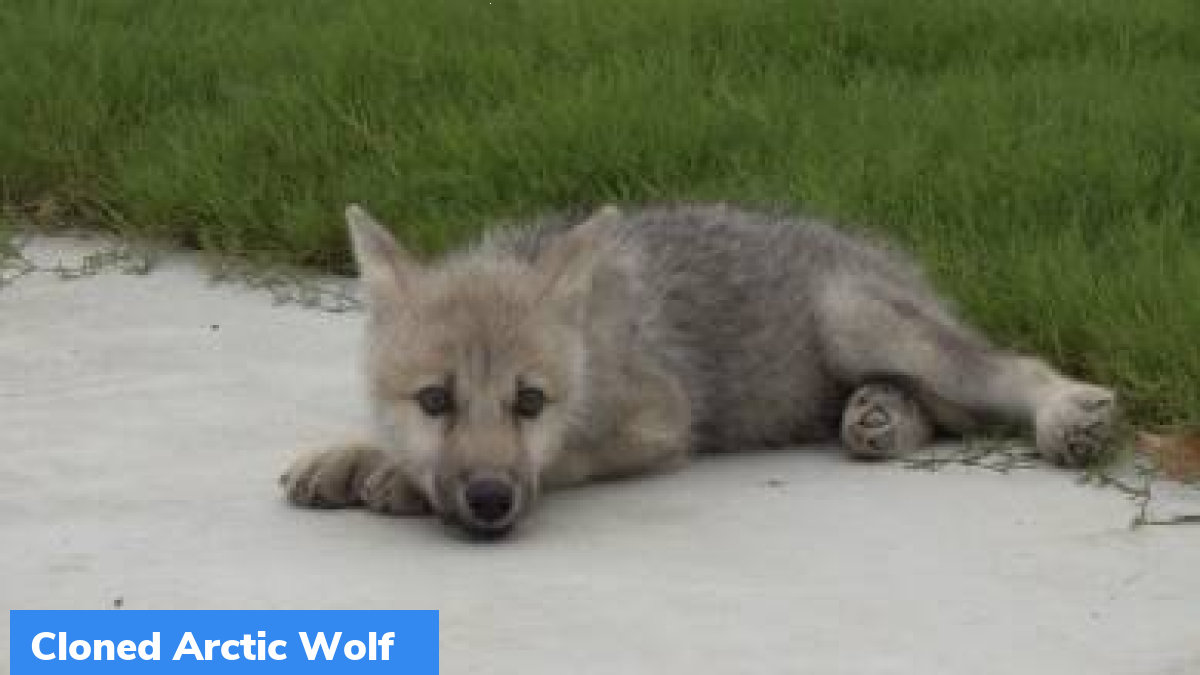World’s First Cloned Arctic Wolf
Scientists in China have successfully cloned wild Arctic Wolf for the first time
Key facts
- A Beijing-based gene firm had succeeded in cloning the Arctic Wolf to prevent the endangered species from going extinct.
- The newly cloned wolf was named Maya, which means good health.
- The donor cell of the wolf came from a skin sample of a wild female Arctic Wolf. Its oocyte was obtained from a dog.
- The cloning process involved the construction of 137 new embryos from enucleated (process of removing nucleus from the cell) oocytes and somatic cells.
- 85 embryos were transferred to the uteri of seven beagles.
- The beagle was chosen as the surrogate mother since this dog breed is found to share genetic ancestry with ancient wolf.
What is cloning?
Cloning is the process of producing living organisms, including cells, tissues etc., with identical genetic materials ether through natural or artificial means. In nature, some organisms produce clones through asexual reproduction. Artificially, the first animal to be cloned was a sheep named Dolly. It was created in 1996 by a Scottish scientist using an udder cell from an adult sheep. Recently, in July 2022, Japanese scientists have succeeded in producing cloned mice using freeze-dried skin cells. This new breakthrough makes it possible to practice bio-banking, which involves saving animal cells and creating clones from them.
About Arctic Wolf
The Arctic Wolf is also known as white wolf or polar wolf. It is native to the High Arctic tundra of Canada’s Queen Elizabeth Islands. It is a subspecies of the grey wolf. This medium-sized wolf is smaller than the Alaskan timber wolf. Since the 1930s, there has been a significant decline in the size of the Arctic wolf’s skull because of the wolf-dog hybridization.
Month: Current affairs - September, 2022
Category: Science & Technology Current Affairs







